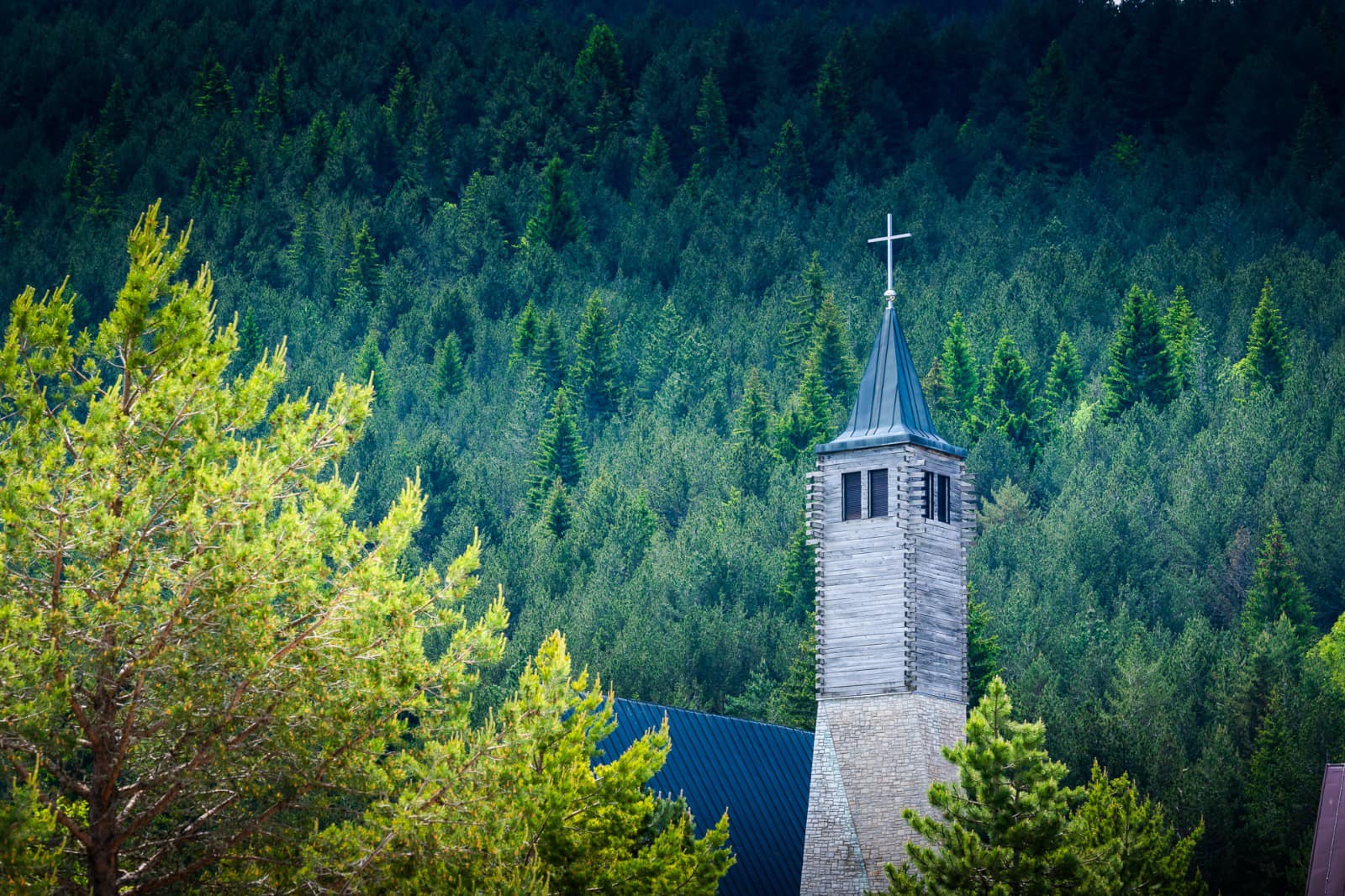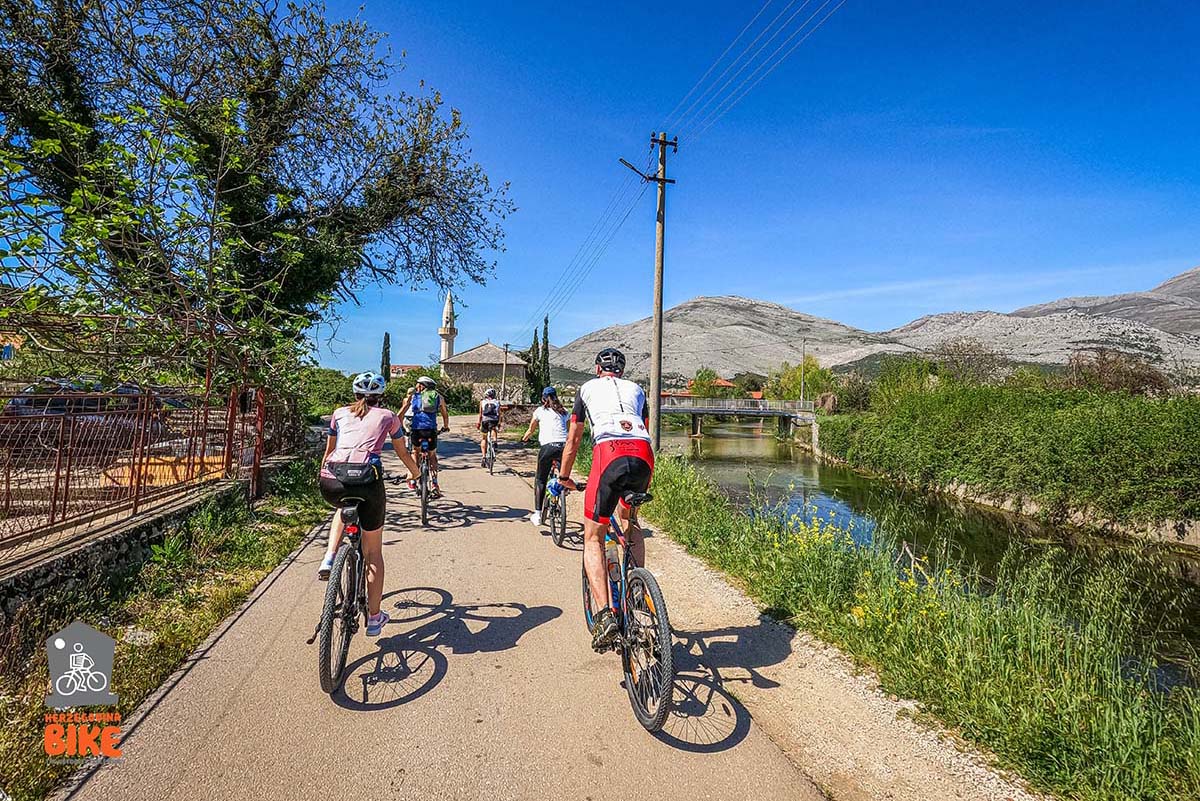Daorson (Greek: ΔΑΟΡΣΩΝ) was the capital of the Hellenized Illyrian tribe Daorsa who lived from 300 to 50 BC in the valley of the Neretva River. The remains of this once strongest city in the wider area are located in Ošanjići, near Stolac in Herzegovina. It consisted of three units, the central one of which was the fortress - the acropolis, which was surrounded by "cyclopean" walls made of huge stone blocks (similar to those in Mycenae, Greece).

It housed all important administrative, public and religious buildings. The defensive wall that ran from southwest to northeast was 65 m long, 4.2 m wide and between 4.5 and 7.5 m high, with gates and towers at both ends. The Daorsi adopted the Greek language and alphabet, and were in constant trade relations with the Greeks. Remains of numerous wine amphorae and fine ceramics were found, but the most valuable find is a bronze helmet decorated with several Greek characters: Aphrodite, Nika, Helios, Dionysus, Muse, Pegasus, etc., and the inscription on it is similar to the inscription on the helmet found in Macedonia. Remains of a granite sculpture of Cadmus and Harmonia were also found, as well as an Illyrian relief with thirteen snakes and five pairs of eagle's wings. In a smaller building, a mint was found with appropriate tools and templates, 39 different coins (29 with the image of King Ballaios from 168 BC and 9 with the Greek inscription ΔΑΟΡΣΩΝ and the image of a ship). The importance of money was great, it meant the independence of the Daorsa tribe, but also confirmation that they had developed crafts, culture and trade with other peoples. The old Hellenistic city of Daorson is located in the locality of Gradina i Banja in Ošanići, municipality of Stolac, and consists of three connected units, the layout of which is determined by the configuration of the terrain. The central part is occupied by the dominant Gradina or Acropolis, on the south and southwest sides of which there are suburban terraces on Greben, while on the east side there is the pre-acropolis area on Bania with residential, business and economic parts of the settlement. It is known that from 167 BC The Neretva was the northwestern border of the Roman Republic in the Balkans, as well as the border of the Daorsi, who enjoyed a kind of autonomy within that state. Then the Daorsi were attacked from the direction of Cetina by the Delmati, a powerful warrior tribe, whose rule in some periods extended across Cetina in the direction of the Neretva. Due to frequent Delmatian attacks, the Daorsi in 158 BC. addressed the Roman Senate. The war against the Delmata was fought from 156 to 155 BC, and the Romans fought against the Delmata from Narona (near today's Metković), where they had a strong stronghold and the support of the Daors. They protected Neretva from Delmata even before the arrival of the Roman army in Narona. In that war, the Delmatians were badly defeated and weakened for a long time.

During the wars between Caesar's and Pompey's supporters on our Adriatic coast, the Delmatians were again on one side, and the Daorsi on the other. Pompey's legacy is 49 BC. allied with the Delmatians and their tribes. The tribes associated with these Delmatians certainly did not belong to the Daors, because Caesar's praetor Vatinius began war operations against the Delmatians in the spring of 45 BC at the latest. It is almost certain that it was at this time (44/43 CE) that the Delmatians attacked the center of Daors, the city of Daorson, and completely destroyed it. From the data on the wars of the Roman praetor Vatini against Delmatus, the time of the destruction of the city of Daorson and the definitive end of life in that city can be fairly accurately determined. The archaeological material from the fortress dates back to the second half of the 1st century BC, which coincides with the assumed time of the attack on the city and the end of life in it.
At the time of the collapse of the Roman Republic (around 27 BC) the Daorsi had 17 decuria (Roman municipia), and at the beginning of the Roman Empire the Delmati had as many as 342 decuria, which speaks volumes about the power relations after the wars. Then part of the Daors tribe was destroyed. A more permanent settlement was never built on the ruins of the city of Daorson. Individual and rare finds from various eras and centuries are represented in this area, as well as recent ones, because people often moved. Later, in the part of Vidova polje and today's Stolac, at the beginning of the 1st century BC. BC, developed a new center of Daors. as the municipium Diluntum.
The first data on the archaeological site known today as Daorson were published by K. Hörmann and V. Radimsky in 1892. A detailed geodetic survey of the terrain was carried out in 1956. The most extensive research was carried out next to the southwestern tower and the main city gate, as well as part of the megalithic wall on the inside and outside. The city promenade on the southern side of the Acropolis next to the Great Mound, the city steps and a small shrine or temple, and the area around the northwestern defense tower were investigated in detail. Research was also carried out on the city cistern, on the area next to the northern and eastern transverse ramparts, on the Velika gomila and near the northeastern tower, where another auxiliary or northeastern city gate was discovered. A dozen residential buildings were discovered on Greben, and on Bania there is a whole series of buildings of various purposes. In parallel, since 1963, in several campaigns, conservation works were carried out on the megalithic walls, but they were insufficient, so the objects that had already been discovered were buried again and thus protected from the effects of weather and earthquakes. The complete movable material from the site excavated all these years is in the depot of the Prehistoric Department of the Archaeological Department of the National Museum of Bosnia and Herzegovina in Sarajevo.

Today, more than three and a half thousand years later, Daorson bears witness to the weight of the years with its megalithic walls. Centuries of powerful and glorious history have not been turned into a tourist attraction today. Only recently, benches and trash cans were installed at the observation deck in front of the complex. Also, until half a year ago, it was almost impossible to reach this locality by car, but the activities of the Federal Ministry of Education, Culture and Sports paved the way and certain steps were taken to promote the attractiveness of this locality.
The archaeological site of the Hellenistic city of Daorson in Ošanići near Stolac was declared a national monument of Bosnia and Herzegovina and was published in the Official Gazette of BiH number 15/03. and at the session of the Commission for the Preservation of National Monuments held from January 21 to 27, 2003. Official Gazette of the Federation of Bosnia and Herzegovina, no. 2/02 and 27/02.
Do you want to experience the city of Daorson, enjoy the stunning architecture, the picturesque view of the city, the river Bregava, and learn all about its rich history? Contact our partners - ERO Travel Tour Agency.
ERO Travel teamprofessionals will create a trip according to your preferences.







